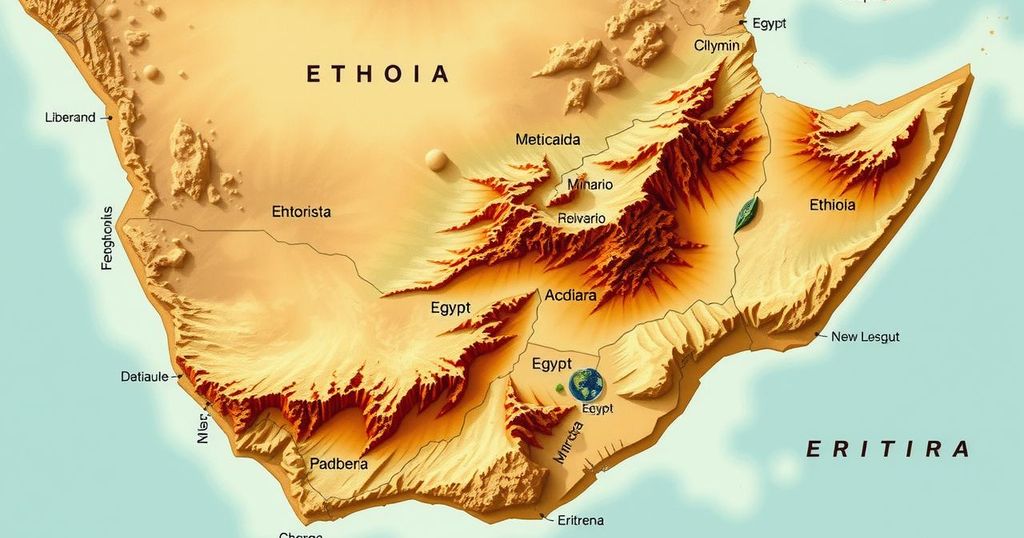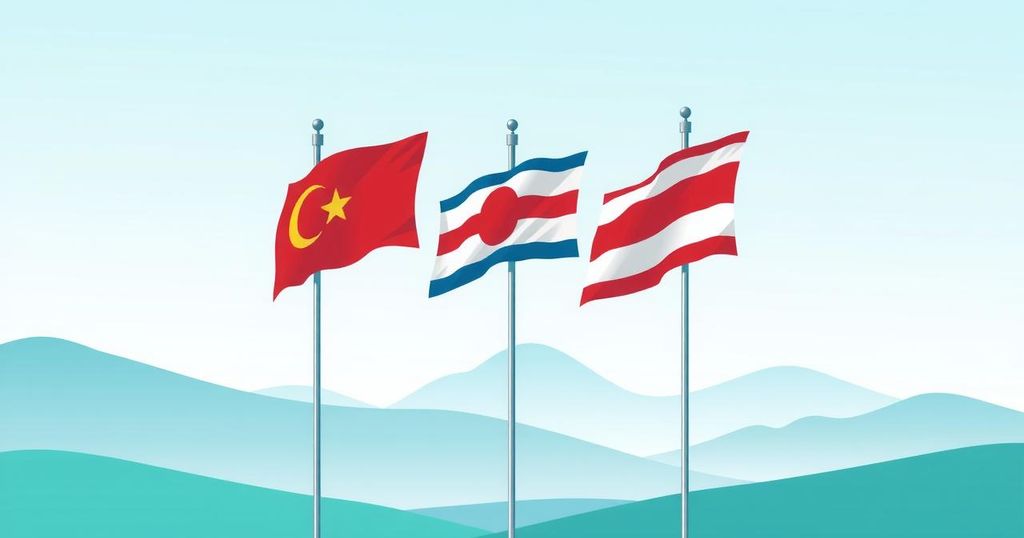The Tigray region of Ethiopia may face renewed civil conflict as the Tigray People’s Liberation Front (TPLF) regains control over Adigrate and establishes a new administration. The situation is complicated by the TPLF’s internal divisions and accusations of external interference from Eritrea and Egypt. Urgent diplomatic actions are needed to prevent further escalation and uphold the peace agreements that ended the previous conflict.
After two and a half years since the Pretoria agreements, which ended the Tigray conflict, Ethiopia’s Tigray region may face renewed civil unrest. The Tigray People’s Liberation Front (TPLF) recently regained control of Adigrate, the region’s second-largest city, and declared a new administration. The TPLF indicated that similar efforts to reclaim power are underway across Tigray, taking advantage of the federal government’s recent military dismissals of several high-ranking commanders.
The split within the TPLF occurred last August, resulting in two factions: one led by Getachew Reda, who was replaced by Amanuel Assaf, and the other led by Debretsion Gebremichael. Reda has urged the federal government to intervene, accusing opposing factions of acting outside the law and dismantling state structures in Tigray. He conveyed these concerns to Western diplomats, stressing the need to prevent another conflict and uphold the peace established by the Pretoria agreements.
In a reaction to accusations from the Tigray Interim Administration, the TPLF’s breakaway faction dismissed calls for external intervention, claiming it posed a threat to the peace agreement. They contended the recent military dismissals were illegitimate, accusing interim officials of betraying Tigrayan interests. Their statement highlighted that legitimate peace and security in Tigray depend on the TPLF and its armed wing.
Opposition parties in Tigray have rallied behind Reda’s interim administration, condemning actions viewed as an attempt to seize power. They accused Eritrea and Egypt of being instigators of the conflict, urging international actors involved in past mediations to intervene to prevent a regional crisis. Allegations also surfaced regarding military leaders in the TPLF smuggling resources through Eritrea, as relations among regional powers become increasingly strained.
Ethiopia’s ties with Eritrea are once again in jeopardy, as mutual accusations of interference and support for opposing factions resurface. Former President Mulatu Tehome’s claims of Eritrean collusion with hostile TPLF elements further exacerbate tensions. In light of these developments, the situation warrants careful observation to determine the potential for a significant regional conflict.
In summary, the Tigray region of Ethiopia is facing the possibility of renewed conflict following recent escalations by the TPLF, resulting in the establishment of a new administration in Adigrate. The division within the TPLF signifies a deepening political crisis, with accusations against Eritrea and Egypt of interference complicating the situation further. Diplomatic efforts are needed to mediate and prevent another catastrophic conflict in the region, emphasizing the importance of upholding the Pretoria agreements.
Original Source: www.agenzianova.com




